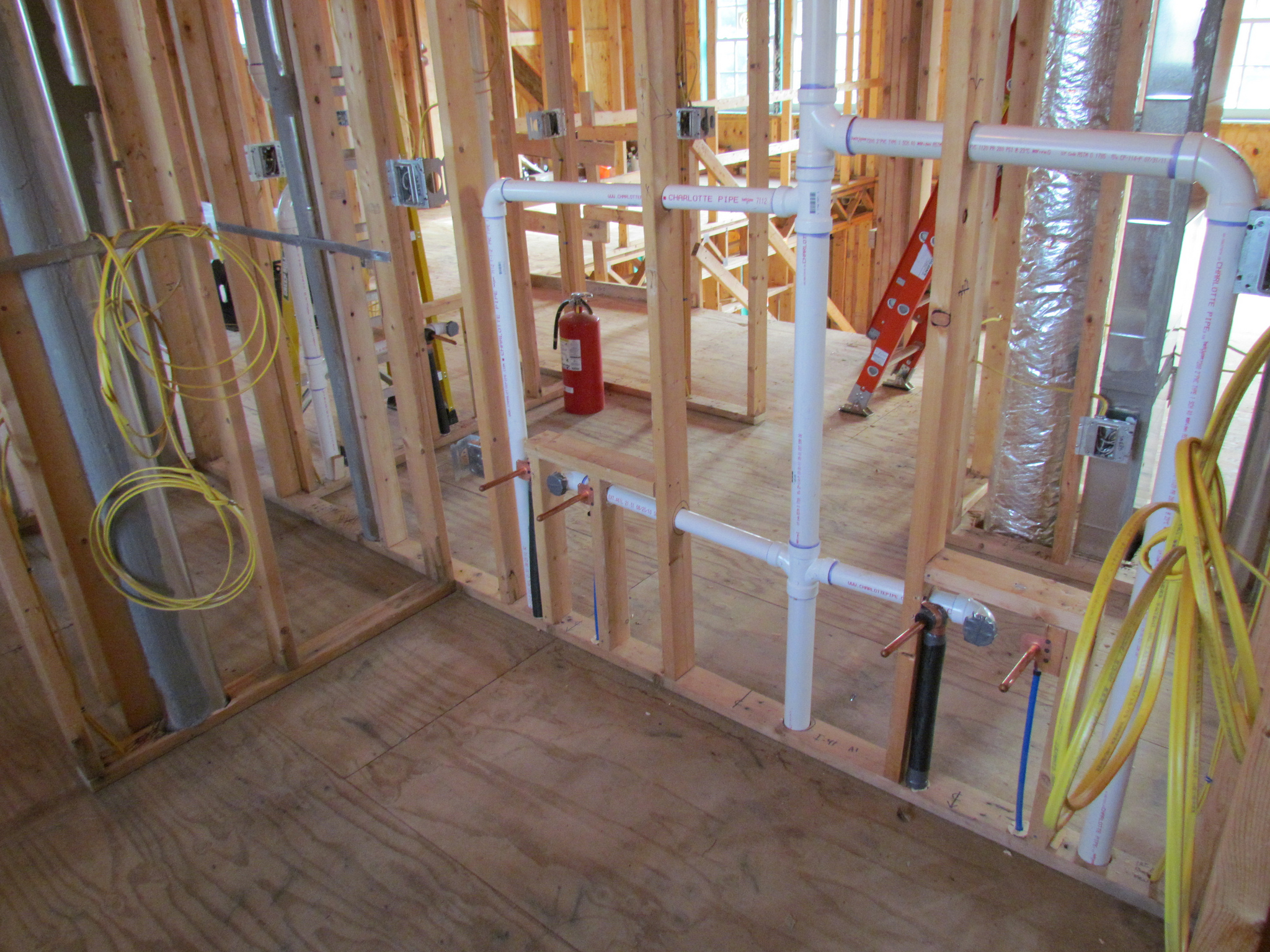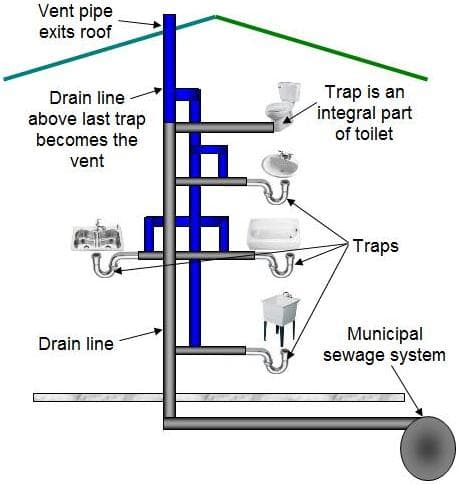Anatomy of Your House's Plumbing System: How It Matters
Anatomy of Your House's Plumbing System: How It Matters
Blog Article
Just about everyone may have their own conception about The Inner Workings of Your Home's Plumbing.

Recognizing how your home's plumbing system functions is essential for every house owner. From providing clean water for alcohol consumption, cooking, and bathing to safely removing wastewater, a well-maintained plumbing system is vital for your family members's health and comfort. In this comprehensive guide, we'll check out the elaborate network that makes up your home's plumbing and deal suggestions on maintenance, upgrades, and managing usual issues.
Introduction
Your home's plumbing system is more than just a network of pipelines; it's an intricate system that guarantees you have accessibility to tidy water and reliable wastewater removal. Recognizing its parts and exactly how they work together can aid you protect against costly repairs and guarantee everything runs efficiently.
Standard Parts of a Plumbing System
Pipes and Tubing
At the heart of your pipes system are the pipelines and tubing that bring water throughout your home. These can be made of numerous products such as copper, PVC, or PEX, each with its benefits in regards to toughness and cost-effectiveness.
Components: Sinks, Toilets, Showers, and so on.
Components like sinks, toilets, showers, and bath tubs are where water is made use of in your house. Comprehending just how these fixtures connect to the pipes system aids in identifying problems and intending upgrades.
Shutoffs and Shut-off Factors
Shutoffs manage the flow of water in your pipes system. Shut-off shutoffs are critical throughout emergencies or when you need to make repair services, enabling you to separate parts of the system without interfering with water flow to the whole home.
Supply Of Water System
Main Water Line
The primary water line connects your home to the community water supply or a private well. It's where water enters your home and is distributed to various fixtures.
Water Meter and Stress Regulatory Authority
The water meter measures your water use, while a stress regulatory authority guarantees that water flows at a risk-free pressure throughout your home's plumbing system, avoiding damage to pipes and components.
Cold Water vs. Hot Water Lines
Understanding the distinction between cold water lines, which provide water straight from the major, and warm water lines, which bring heated water from the water heater, assists in fixing and planning for upgrades.
Water drainage System
Drain Pipes Water Lines and Traps
Drain pipes carry wastewater far from sinks, showers, and toilets to the sewer or septic system. Traps prevent sewer gases from entering your home and additionally trap debris that might cause blockages.
Air flow Pipelines
Ventilation pipelines allow air right into the drain system, protecting against suction that can reduce drain and trigger traps to vacant. Correct ventilation is crucial for keeping the integrity of your pipes system.
Value of Appropriate Drainage
Ensuring correct drain prevents backups and water damages. On a regular basis cleaning up drains pipes and keeping traps can protect against expensive repairs and expand the life of your pipes system.
Water Heater
Types of Water Heaters
Hot water heater can be tankless or traditional tank-style. Tankless heating systems warm water as needed, while storage tanks save warmed water for prompt use.
Just How Water Heaters Connect to the Pipes System
Understanding exactly how hot water heater link to both the cold water supply and hot water circulation lines helps in detecting problems like not enough warm water or leaks.
Upkeep Tips for Water Heaters
On a regular basis flushing your hot water heater to remove debris, examining the temperature level settings, and evaluating for leaks can expand its life-span and improve energy performance.
Common Plumbing Concerns
Leakages and Their Causes
Leakages can happen as a result of aging pipelines, loosened fittings, or high water pressure. Resolving leaks without delay prevents water damage and mold growth.
Blockages and Clogs
Obstructions in drains and bathrooms are commonly brought on by flushing non-flushable things or a build-up of oil and hair. Using drainpipe displays and being mindful of what goes down your drains can avoid blockages.
Indications of Plumbing Issues to Look For
Low water stress, sluggish drains pipes, foul odors, or abnormally high water costs are indicators of possible pipes troubles that should be addressed promptly.
Pipes Maintenance Tips
Normal Examinations and Checks
Set up yearly plumbing evaluations to capture concerns early. Look for signs of leaks, corrosion, or mineral accumulation in taps and showerheads.
Do It Yourself Upkeep Tasks
Basic tasks like cleansing tap aerators, checking for toilet leakages making use of dye tablets, or insulating revealed pipes in chilly environments can stop significant plumbing issues.
When to Call a Professional Plumber
Know when a plumbing concern requires expert knowledge. Trying complicated repairs without appropriate knowledge can bring about even more damage and higher repair prices.
Updating Your Plumbing System
Reasons for Upgrading
Updating to water-efficient fixtures or replacing old pipelines can boost water quality, reduce water bills, and raise the worth of your home.
Modern Plumbing Technologies and Their Advantages
Discover innovations like wise leak detectors, water-saving toilets, and energy-efficient water heaters that can save money and lower ecological impact.
Price Factors To Consider and ROI
Determine the in advance costs versus lasting cost savings when thinking about plumbing upgrades. Numerous upgrades spend for themselves via minimized utility costs and fewer repairs.
Ecological Impact and Preservation
Water-Saving Fixtures and Devices
Setting up low-flow taps, showerheads, and bathrooms can considerably lower water usage without giving up performance.
Tips for Lowering Water Usage
Simple routines like fixing leakages promptly, taking much shorter showers, and running full lots of washing and dishes can preserve water and lower your energy bills.
Eco-Friendly Pipes Options
Consider sustainable plumbing materials like bamboo for floor covering, which is durable and green, or recycled glass for countertops.
Emergency situation Preparedness
Actions to Take During a Pipes Emergency
Know where your shut-off shutoffs are located and exactly how to turn off the water system in case of a burst pipe or significant leakage.
Value of Having Emergency Situation Get In Touches With Convenient
Keep get in touch with details for local plumbing professionals or emergency solutions readily offered for quick feedback during a pipes situation.
Do It Yourself Emergency Fixes (When Suitable).
Short-term repairs like utilizing air duct tape to spot a dripping pipeline or placing a container under a leaking faucet can reduce damage up until an expert plumbing technician gets here.
Verdict.
Recognizing the anatomy of your home's plumbing system empowers you to maintain it efficiently, saving money and time on repairs. By following routine upkeep regimens and remaining informed regarding modern-day plumbing innovations, you can guarantee your plumbing system runs efficiently for many years ahead.
HOW YOUR PLUMBING SYSTEM WORKS
Which Pipes Do What?
Blue lines = fresh water supply entering the building
Red lines = hot water supply entering the building
Grey lines = pipes carrying waste away from the building and venting pipes carrying gases away from the building (through the roof)
YOUR MAIN PLUMBING SYSTEMS
There are two main plumbing systems that support your home s basic plumbing needs one that brings clean water into your home, and one that sends dirty water away from your home. Connected to the toilet, bath, shower, and other faucets in your home, these two systems keep your water flowing in the right directions.
ACCESSING FRESH WATER
Fresh and clean water is brought into your home through the main water supply line . Filtered through one pipe, this water is pressured to flow into the various fixtures in your home at any given time.
This water can be sourced from a well located on your property, a pond or river (mostly cottages), or, as in most cases, from the city s municipal water treatment centre. However, it is important to note that water that is untreated, such as the water siphoned from ponds or rivers, may not be safe to drink. Personal water supplies always need to be treated for hardness and contaminants before consumed.
MUNICIPAL WATER SUPPLIES
Improve taste and odour
Remove sediment
Eliminate hardness
Reduce chlorine
COLD WATER SUPPLY VS. HOT WATER SUPPLY
Cold water flows into your home or building through the service line, which then distributes hot or cold water to your fixtures. This line is most commonly run through a central column that runs floor to floor. Hot water runs in short and straight pipes as the longer the pipeline, the more heat that will be lost in the transfer. Having shorter pipes also allows residents to access hot water more quickly.
WASTE WATER SYSTEM
Your wastewater system is divided into two parts pipes that send wastewater away from your home and venting pipes that send sewer gas away from your home. Sewage water travels through pipes that flush the water and waste towards local sewers that are operated and managed by your city or town. Most sewer systems rely on gravity to move the wastewater to where it needs to go.
The further away from your toilet or sink, the larger wastewater pipes become. This allows for waste to be disposed of from various parts of your home or business at once without pipe blockages. The angle and flow of these pipes are also essential for keeping your waste pipes clear of build up.
https://harrisplumbing.ca/how-your-home-plumbing-system-works/

HOW YOUR PLUMBING SYSTEM WORKS
Which Pipes Do What?
YOUR MAIN PLUMBING SYSTEMS
There are two main plumbing systems that support your home s basic plumbing needs one that brings clean water into your home, and one that sends dirty water away from your home. Connected to the toilet, bath, shower, and other faucets in your home, these two systems keep your water flowing in the right directions.
ACCESSING FRESH WATER
Fresh and clean water is brought into your home through the main water supply line . Filtered through one pipe, this water is pressured to flow into the various fixtures in your home at any given time.
This water can be sourced from a well located on your property, a pond or river (mostly cottages), or, as in most cases, from the city s municipal water treatment centre. However, it is important to note that water that is untreated, such as the water siphoned from ponds or rivers, may not be safe to drink. Personal water supplies always need to be treated for hardness and contaminants before consumed.
MUNICIPAL WATER SUPPLIES
COLD WATER SUPPLY VS. HOT WATER SUPPLY
Cold water flows into your home or building through the service line, which then distributes hot or cold water to your fixtures. This line is most commonly run through a central column that runs floor to floor. Hot water runs in short and straight pipes as the longer the pipeline, the more heat that will be lost in the transfer. Having shorter pipes also allows residents to access hot water more quickly.
WASTE WATER SYSTEM
Your wastewater system is divided into two parts pipes that send wastewater away from your home and venting pipes that send sewer gas away from your home. Sewage water travels through pipes that flush the water and waste towards local sewers that are operated and managed by your city or town. Most sewer systems rely on gravity to move the wastewater to where it needs to go.
The further away from your toilet or sink, the larger wastewater pipes become. This allows for waste to be disposed of from various parts of your home or business at once without pipe blockages. The angle and flow of these pipes are also essential for keeping your waste pipes clear of build up.
https://harrisplumbing.ca/how-your-home-plumbing-system-works/
We had been made aware of that write-up about Exploring Your Homes Plumbing Anatomy from a good friend on another website. Loved our blog entry? Please share it. Help somebody else discover it. I appreciate reading our article about Plumbing Installation 101: All You Need to Know.
Suggested Site Report this page